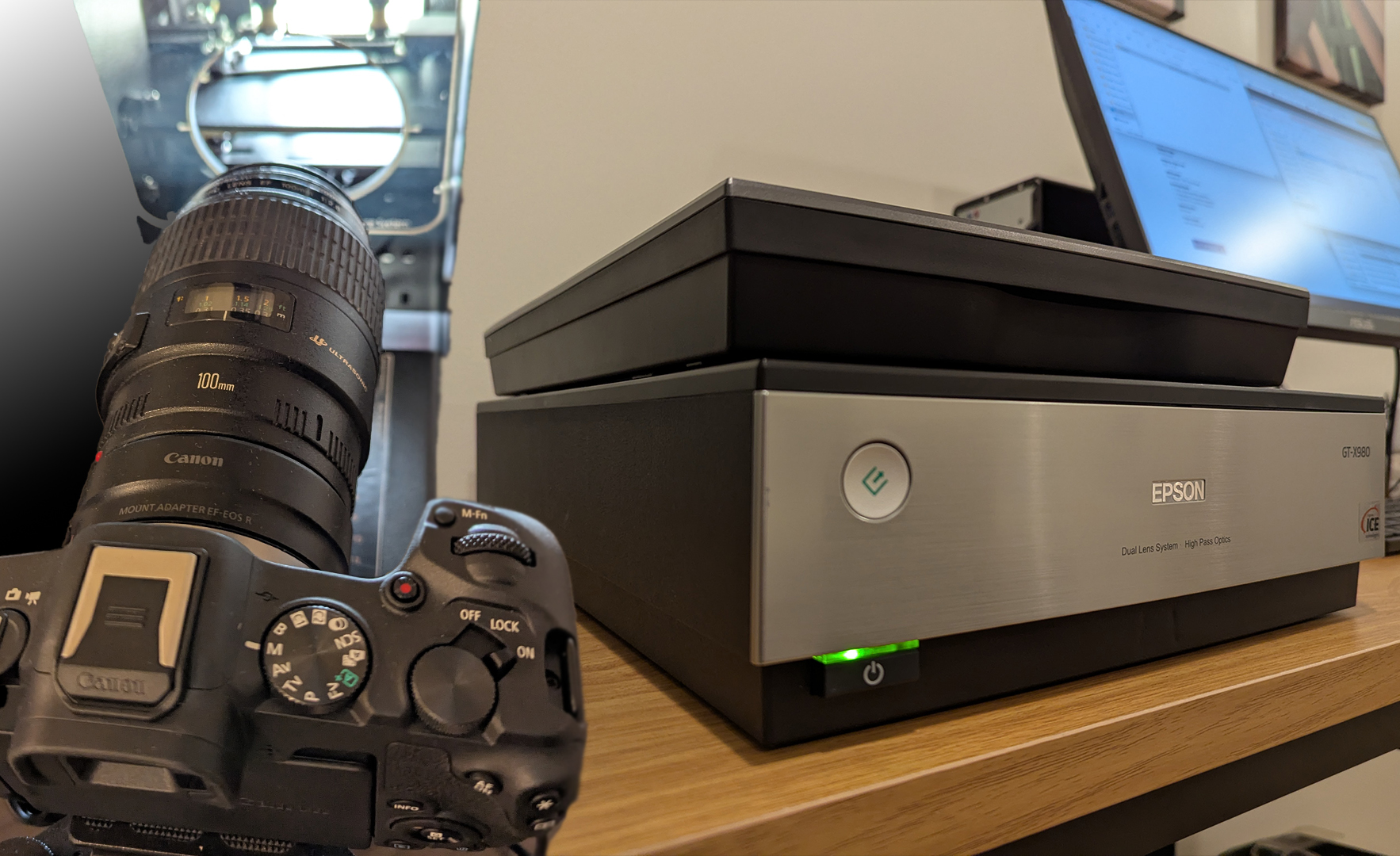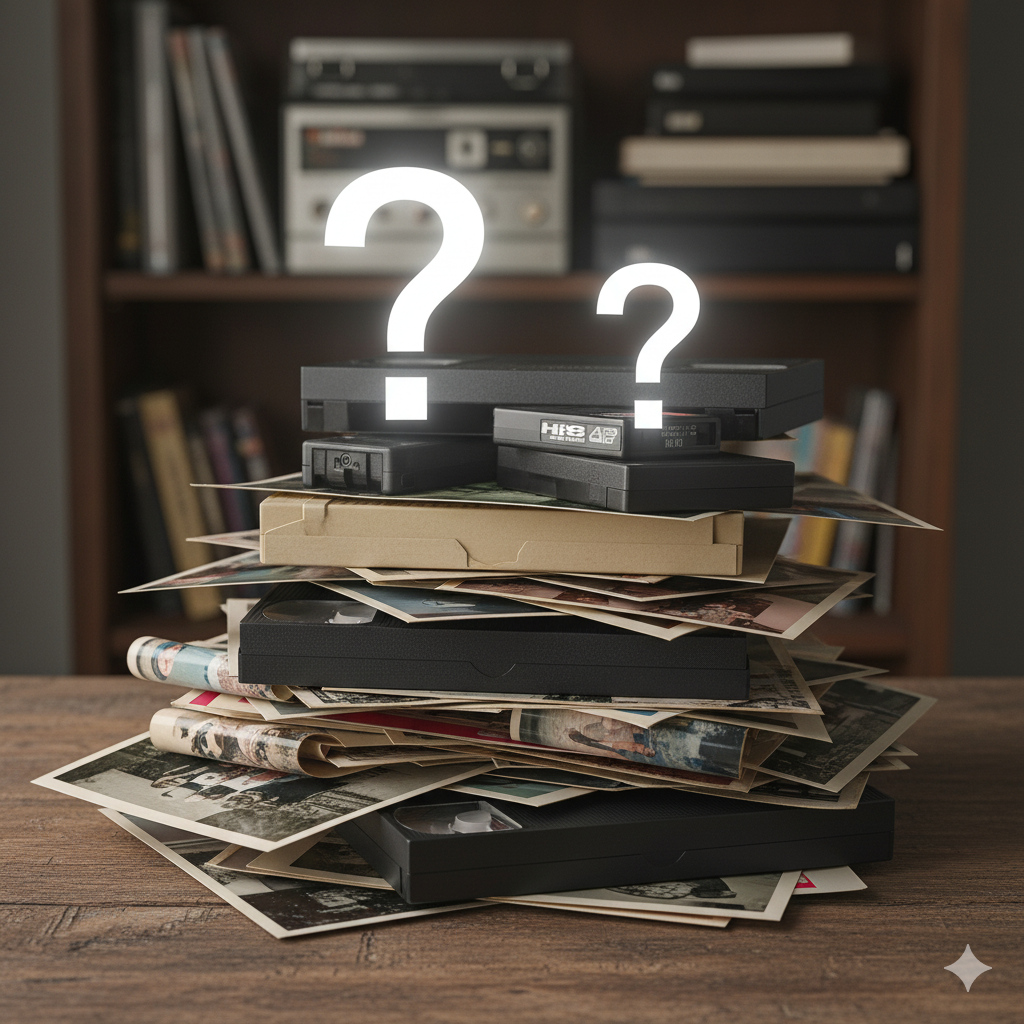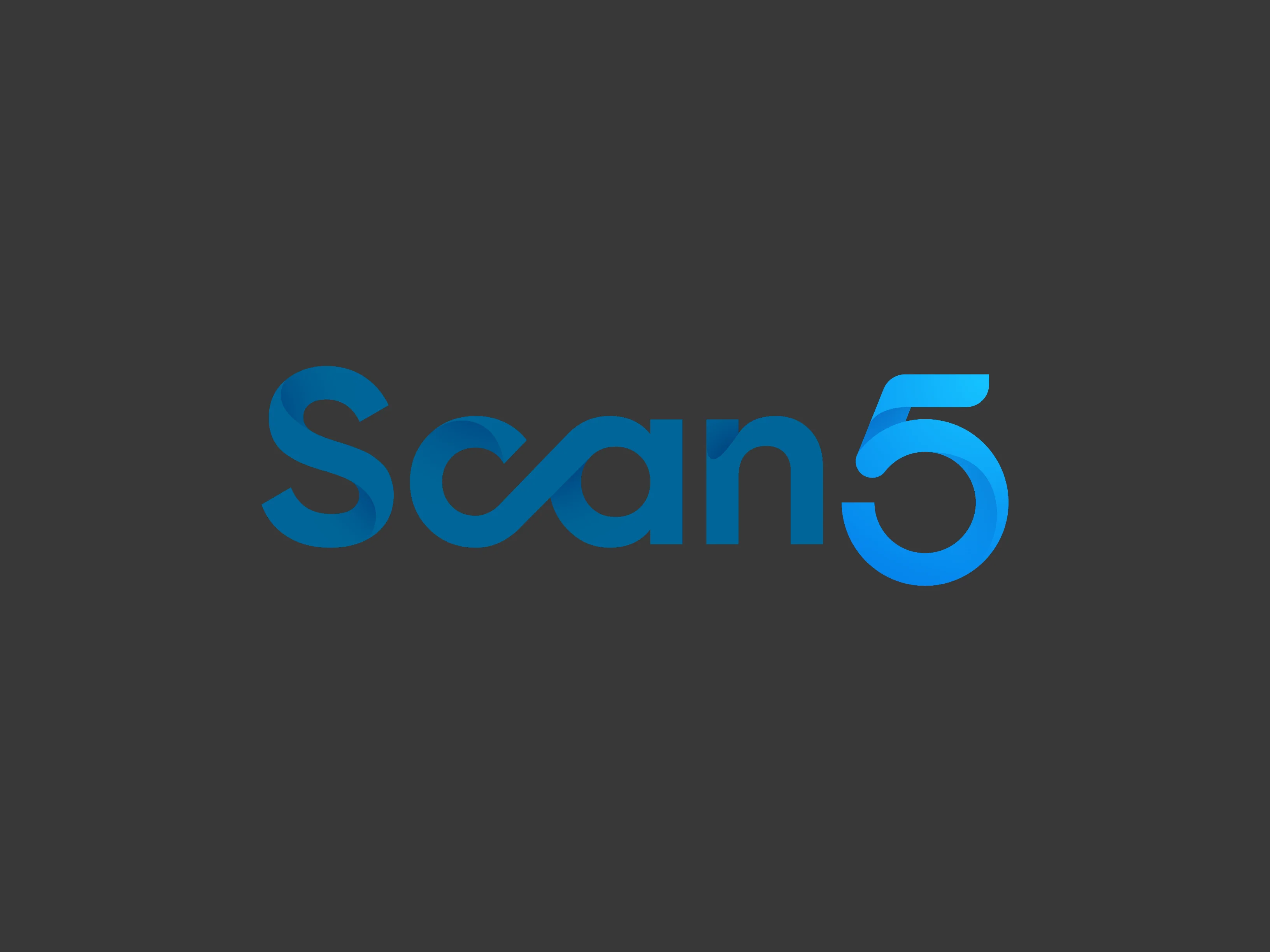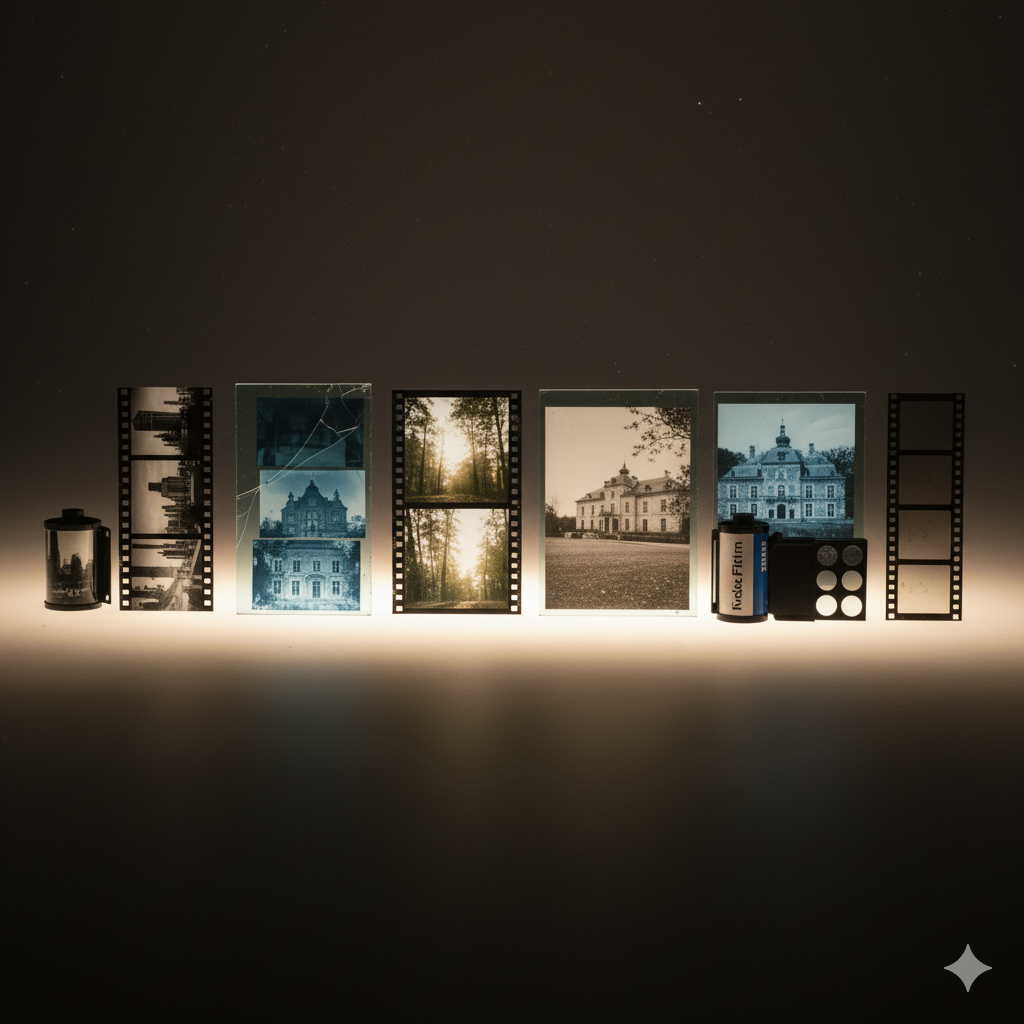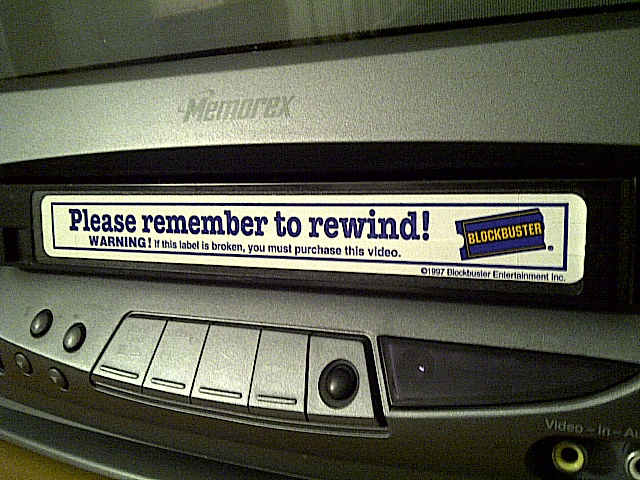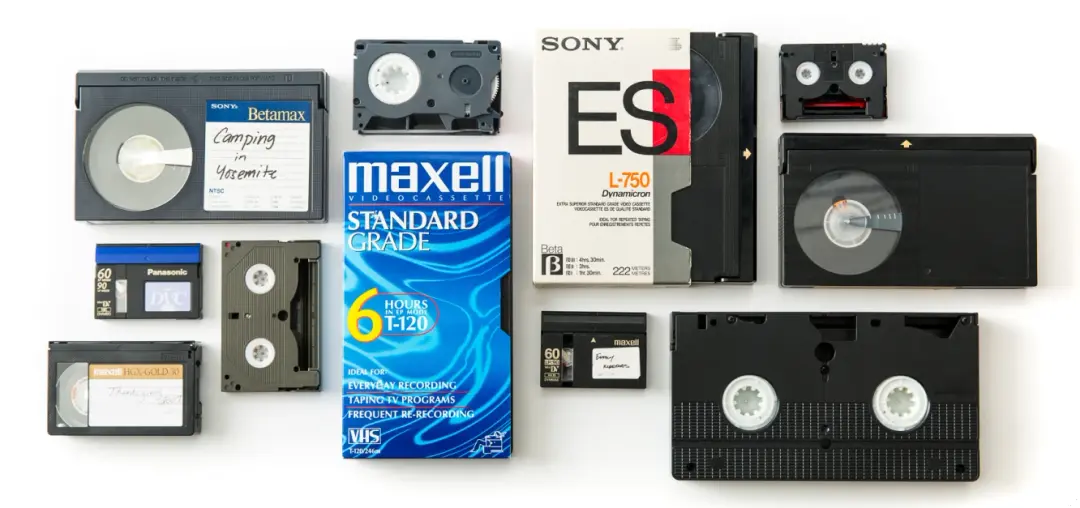Whether you’re researching scanning companies, or trying to scan film yourself, you’ll likely come across two popular methods for scanning negatives and slides. The traditional method that many professionals use, and was most accessible to consumers, is flatbed scanning. Recently, with advancements in digital camera technology, more and more photographers and companies are starting to switch to DSLR (or mirrorless) camera scanning. What’s the difference between the two, and why would you choose one over the other?
Flatbed Magic?
First off, let’s dispel some misconceptions about flatbed scanners. Scanners have been around since the mid 1970s, and the technology has been largely unchanged since. There have, of course, been advancements in sensor technology and color science, but scanners still work the same way today as they did back in the 70s. If you have a flatbed scanner at home, it works exactly the same way as a high end professional scanner, the optics, light source, and algorithms just aren’t as fine tuned.
So how does it work? Well, there’s nothing magic about flatbed scanners that allows them to convert a physical image into a digital picture. They use a camera! That’s right, there’s a camera inside your scanner! Digital cameras didn’t exist in 1975, but digital and analog light sensors did. Despite their existence, they were very low resolution. In order to get a high resolution “scan” of a print, you had to use these low resolution sensors to take multiple photos and then stitch them together to make one high resolution digital image.
That’s all a flatbed scanner is! It’s a digital camera (with a light source) that takes a picture one line at a time, then in software, it combines all of those single line images to create one complete photo. The benefit of this method is that you can get very high resolution images using low resolution, and relatively cheap, sensors. The trade off being that the higher the resolution scan, the longer it will take to complete, since the scanner has to take more pictures to produce a higher resolution. This made flatbed scanners a viable method for digitizing film negatives and slides since they’re very small, but have a very high resolution.
Don’t Be Camera Shy!
In recent years, digital camera technology has advanced considerably. Many digital cameras today have resolutions upwards of 40 Megapixels (MP). That’s roughly equivalent to an 18x24” print made at 300DPI. For comparison, 35mm film traditionally wasn’t intended to be enlarged more than 8x10”, which at 300DPI would be equivalent to about 8MP. So if you have a digital camera with a resolution higher than 8MP, you have enough resolution to “scan” your 35mm film with enough information to make quality 8x10 prints. Depending on the film stock, you can produce a much higher resolution image without seeing too much grain. Most flatbed scanners have a maximum optical resolution of 6400DPI, which is the equivalent of about a 55MP scan of a 35mm frame. If your digital camera has a resolution of 55MP or higher, you can meet or beat the resolution of a flatbed scan. Most people don’t make prints from their scans and only view them on phone or computer screens (which even at 4K is only about 8MP), so DSLR scans often provide more than enough resolution needed to have a satisfactory image.
For these reasons, many professional photographers and hobbyists who are interested in shooting and scanning their own film opt to do DSLR scanning rather than purchasing and maintaining a flatbed scanner. Since they already have a high resolution camera and lens that may cost thousands of dollars, they can spend a couple hundred dollars to build a DSLR scanning station instead of spending thousands more on a single use transparency flatbed scanner.
To put it plainly, if you’re not making giant prints from your scans, you can get flatbed quality images from a DSLR scan. Many photographers even prefer the quality of DSLR scans over flatbed scans! A lot of it comes down to personal preference, style, and taste. With a skilled technician, like those at Scan5, a beautiful, high quality scan can be produced from either a flatbed or DSLR.
Flatbed vs DLSR Showdown!
Now that we understand a flatbed is just a camera that moves and DSLRs can produce high resolution images on par with flatbed scans, let’s get into the nitty gritty and talk about why you would choose one method over the other.
Cost
We already discussed one big difference, cost. Flatbed transparency scanners can cost thousands of dollars and are only good for one thing, flatbed scanning. If you already have a high quality digital camera, you can get started scanning negatives for as little as a couple hundred dollars with kits from companies like CineStill Film.
Speed
Since flatbed scanners have to “scan” the image and take multiple pictures, flatbed scanners are much slower than DSLR scanners. With DSLR scanners, you can capture the entire frame in a fraction of a second in a single click. If you have a TON of film to scan, DSLR scanning is going to be much more efficient, however, there is a tradeoff. Which brings us to…
Workflow
Flatbed transparency scanners are optimized for negative scanning, whereas DSLRs are optimized for taking pictures of the real world. Flatbed scanners will automatically invert your negatives and produce a high quality, print worthy scans directly from the scanner without any editing. When using a DSLR, you are only able to capture negatives as negatives. You will need to take additional steps to invert, crop, and color correct your negatives. This requires additional software and knowledge to perform well. Due to the additional post-processing time, DSLR scans can take just as long as flatbed scans to produce an acceptable image.
Image Control
With flatbed scanning, you can control almost everything at the scanner level. Exposure, color, sharpness, and even dust reduction. Since you can control and set your preferences before you do the scan, the scanner will adjust the light source to compensate for exposure and color in the scan allowing you to get a print ready image right from the scanner, or extract as much information as possible from the negative to edit later.
While you can control many of these settings with a DSLR, it’s a bit more cumbersome to control things like color, sharpness, and other image processing preferences. Also, since the camera can’t invert the negative, you won’t know what your adjustments are doing to the final image. Therefore, you’re forced to shoot flat to get a good exposure and capture all of the original detail. This isn’t a bad thing, since the photos will need to be inverted and edited later anyway, but if you don’t want to edit your photos, this may not be the workflow for you.
Dust
Many flatbed scanners have a technology called, “Digital ICE” built into them. Digital ICE is a type of dust reduction where the scanner takes two pictures of the image, one in full color, and one in infrared (IR). In the IR image, the negative will appear clear, but dust will appear as black spots. Digital ICE uses this information to pinpoint where the dust is and remove it using advanced algorithms. It doesn’t usually catch all of the dust, and sometimes there is artifacting in the removal process, but it’s a quick and efficient way to clean up an image without any additional work.
With DSLR scanners, there is no built in dust reduction. The negatives will have to be cleaned by hand with a microfiber cloth and then the digital files will have to be manually dusted. Since even Digital ICE scans will often require additionally manual dusting, this isn’t usually much of a trade off. There is also dust reduction software available that is just as good, and sometimes better, than Digital ICE, but no form of automatic dust reduction is perfect.
Large and Medium Format
While you can absolutely scan medium and large format film with a DSLR, you’re limited to the resolution of your camera’s sensor. If your camera has a 40MP sensor, no matter how big your frame of film is, you will only be able to get a 40MP scan of the film.
Flatbed scanners scan line by line, so the bigger the film, the more resolution you get! Scanning a large format 4x5 piece of film can be scanned at up to 819MP!!! That’s a TON of resolution. For most applications, that amount of resolution is unnecessary and impractical, but for artists or anyone who is planning to make large prints, you might need all of that resolution. Where 35mm can be printed up to about 8x10”, a large format 4x5 can be printed up to about 85x107”! If you want all of that resolution, you will need to use a flatbed or drum scanner. But again, if you’re only planning to view your images on screens, DSLR scans will be more than sufficient.
Stop Talking and Show Me What they Look Like!
Okay! Fine! Take a look!
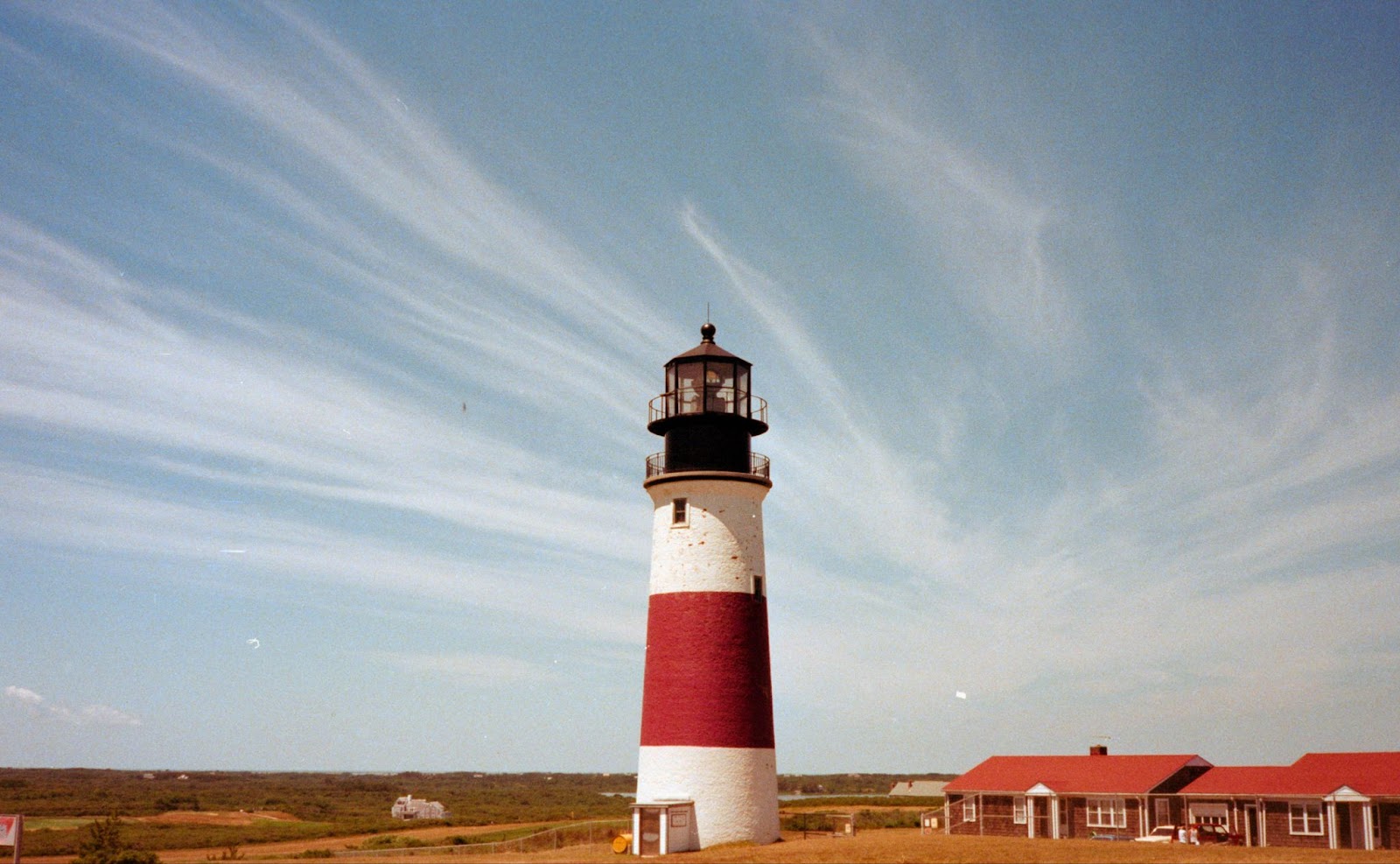
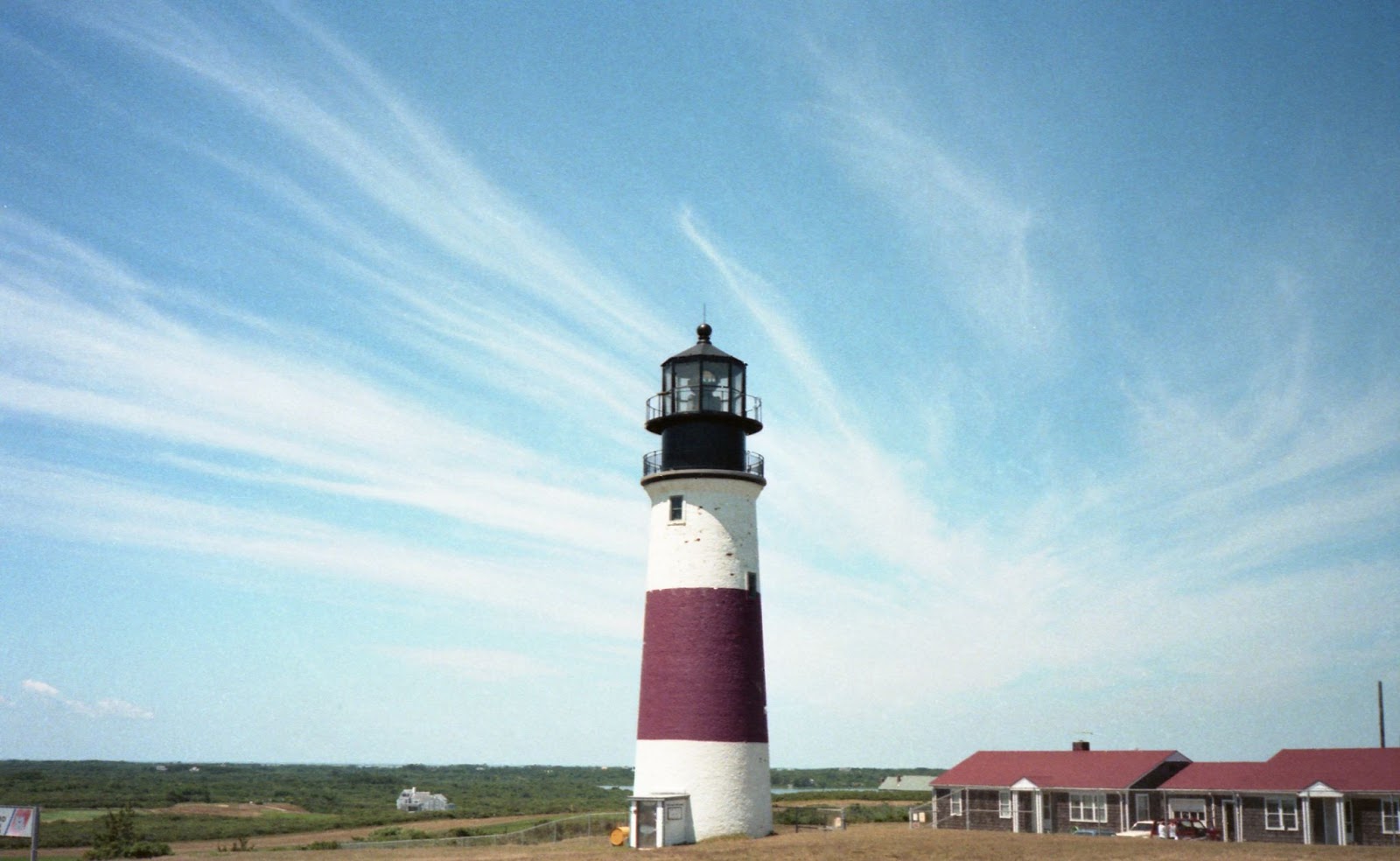
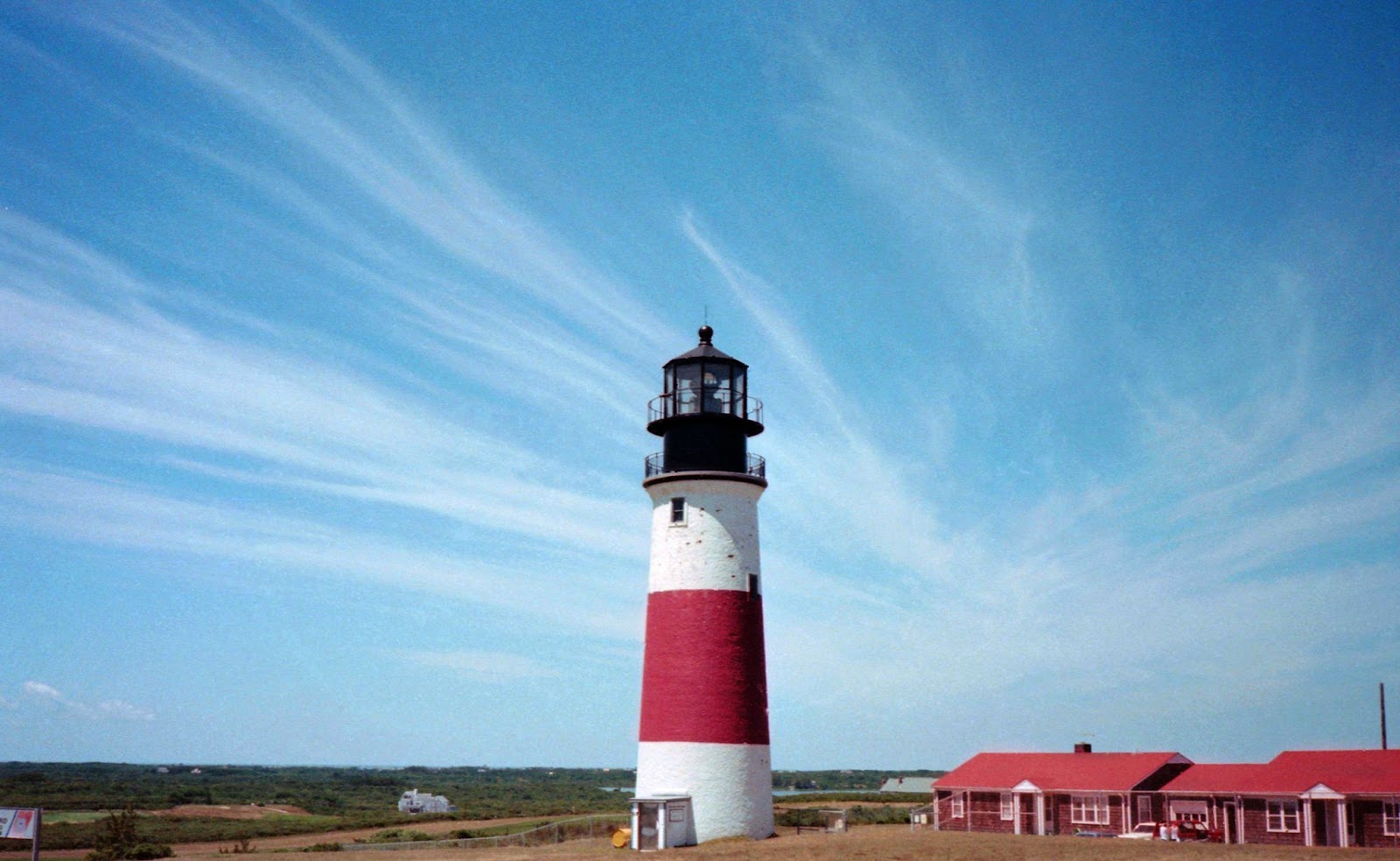
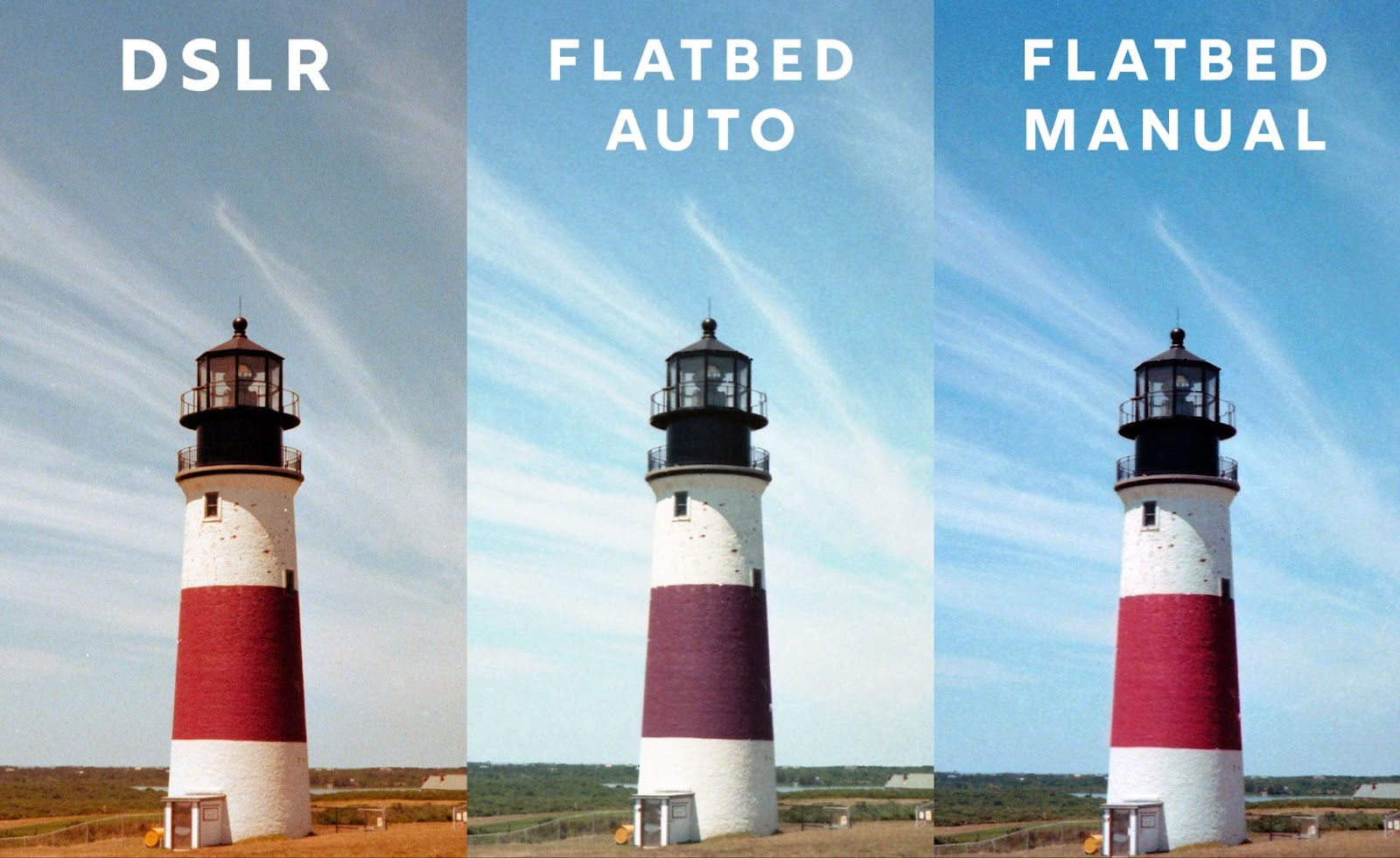
As you can see, each option has a vastly different effect! DSLR scanning is warmer and a little sharper, but there’s more noise and dust. Flatbed with manual editing has better tonal separation and feels a little more painterly and true to film, but it’s not as sharp. Flatbed auto, despite being my least favorite, is a good balance between the two, and with minimal editing could be made to look like either the DSLR or Manually edited Flatbed scan.
Especially when scanning film negatives, the process of inverting and adjusting the negatives is a highly subjective process. Personally, I definitely prefer the DSLR scan to the auto correction of the flatbed, but I’m torn between the DSLR scan and the Manually edited Flatbed. I think both are great for different reasons. I like the sharpness of the DSLR scan, but I think the manually edited flatbed scan is more vibrant and painterly. It’s more artistic. That said, if I had to do a large batch of negatives that I didn’t want to edit, I would definitely scan them all with a DSLR. Then, if I found any photos I wanted to edit, I’d rescan them on the flatbed.
Other Scanners
Briefly, if you’re researching film scanners, you might come across some standalone film scanners, such as the Kodak Pakon, Noritsu, or Fuji Frontier. These were primarily bundled with “Mini-Lab” film processors and used in small photo labs like Walgreens. Although very high quality scans, they essentially work the same way as a flatbed scanner, but instead of the camera moving, the film moves over the camera. These are optimized for 35mm film, some can do medium format, but none can do large format. Since they’re optimized for strip film, they can sometimes produce better results than a flatbed, but they’re usually much lower resolution and give you less flexibility in post-processing. These types of scanners are no longer manufactured, so working scanners are very hard to come by.
Drum scanners are another type of scanner that are the absolute top of the line, but they require a lot of special handling. They’re also very large, expensive, and no longer manufactured. Drum scanning is really only necessary for high end print work, especially if you’re planning to blow a photo up EXTREMELY large. They have a much higher resolution than flatbed scanners and because of the technology used, they have almost no noise. But unless you’re blowing up your photos to wall size, you can get flatbed scans to look just as good as drum scans, it will just take a little bit extra work. Some companies still have drum scanners, but parts to maintain these scanners are few and far between. These scans also take a LONG time to accomplish and as such are VERY expensive. Many places start at $50 for one frame!
Dealer’s Choice
Different scanning technology can create vastly different results. At Scan5 we have both flatbed scanners and DSLR scanners to help suit your specific needs and budget. For mass archiving, we definitely recommend DSLR scanning, it’s quick and the most affordable option. It’s the best option if you’re not planning on editing your photos. If you need a higher resolution or plan on manually editing your images, you can move up to our flatbed scans.


